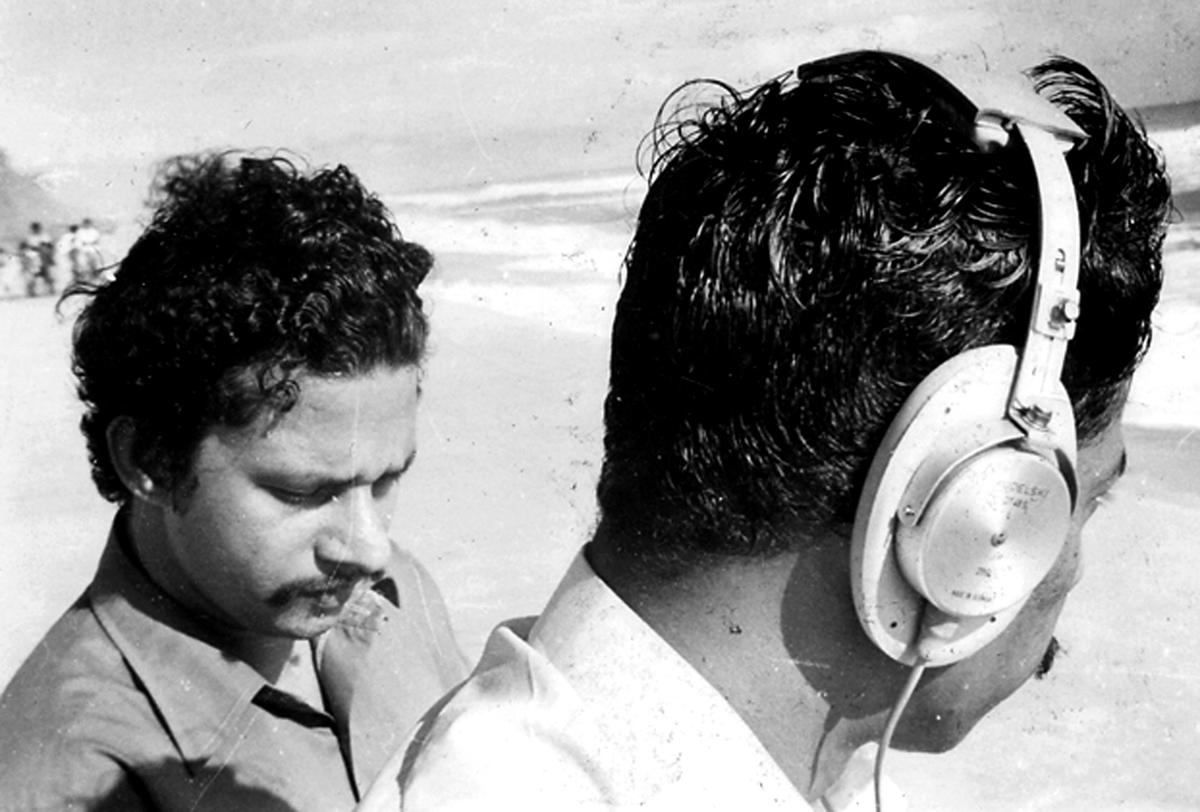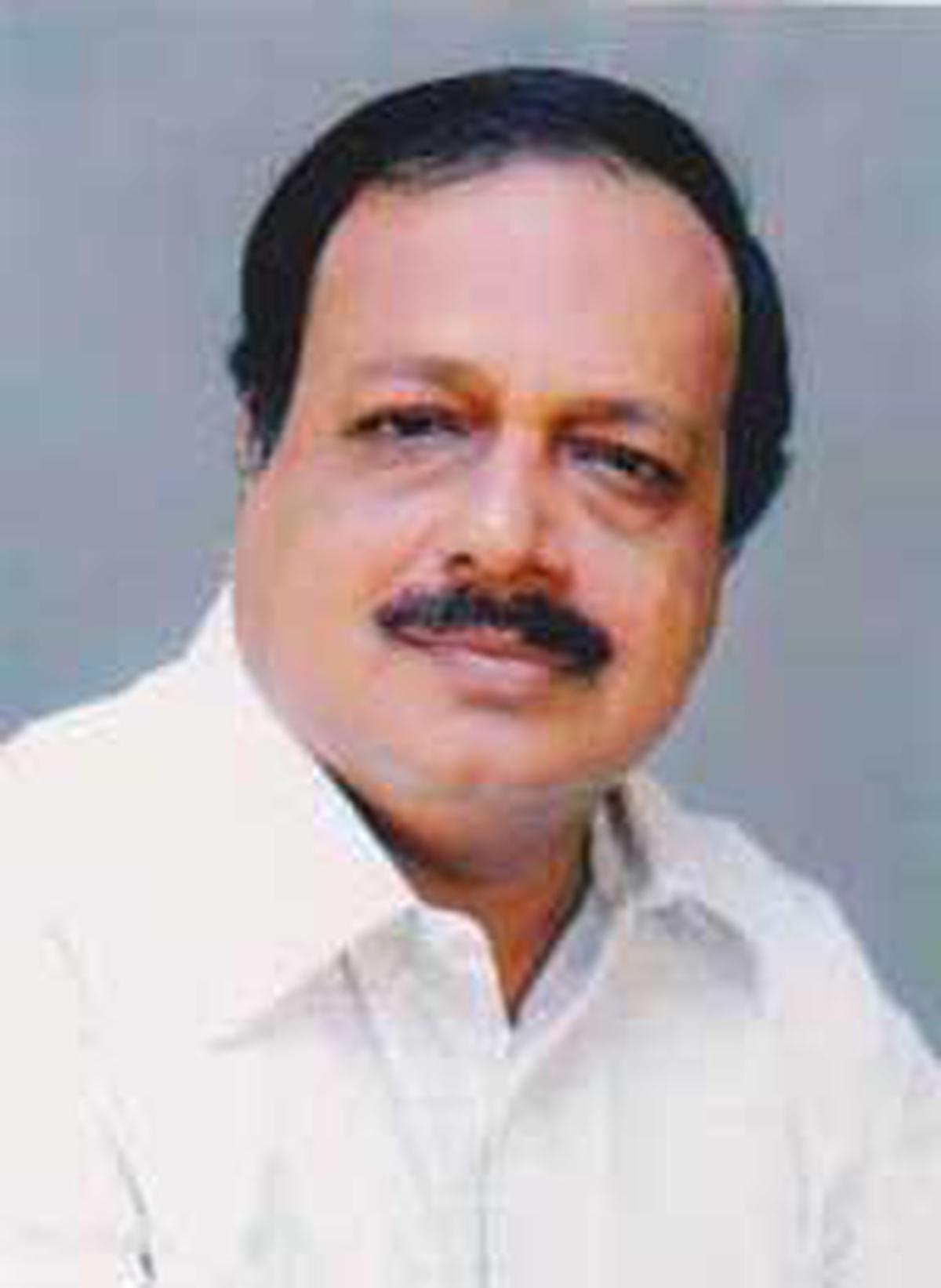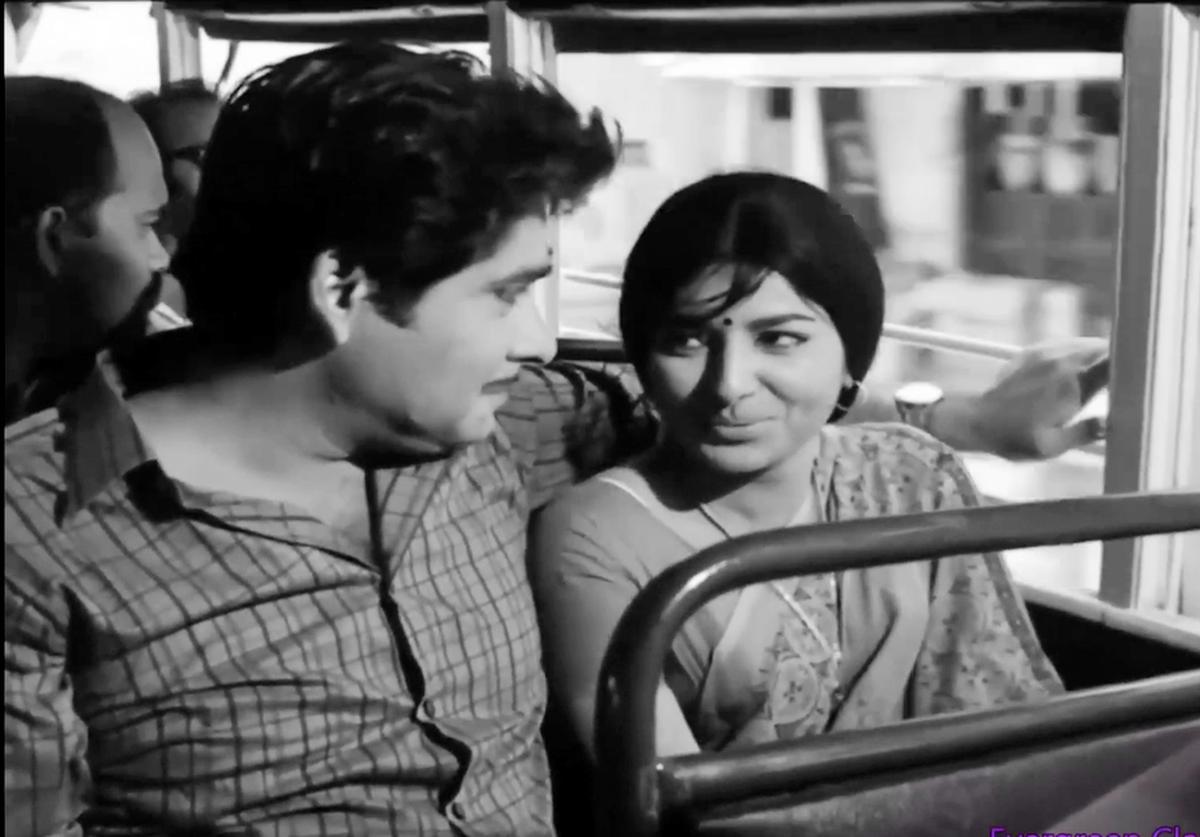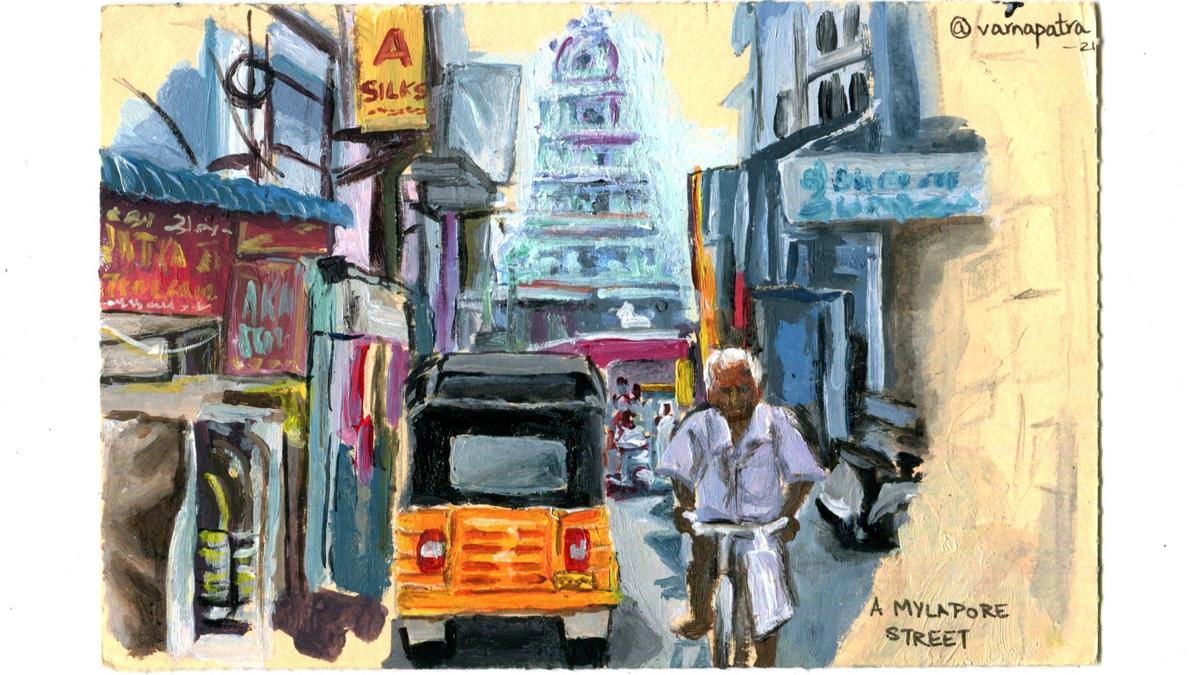Madhu and Sharada in a still from Swayamvaram
| Photo Credit: Special Arrangement
Fifty years ago, on this day (November 24, 1972), a black-and-white film was released in Sree Padmanabha Theatre in Thiruvananthapuram. The debut film of director Adoor Gopalakrishnan, Swayamvaram, starring Madhu (Viswam) and Sharada (Sita), two mainstream stars of the times, is now a classic in India cinema.
To mark the film’s golden jubilee, filmmaker and cineaste Madhu Eravankara has made a documentary that maps the journey of the director, the movie Swayamvaram and the making of the film. The Journey – Swayamvaram At Fifty will be screened at Ganesham, Thiruvananthapuram, in the presence of the director and Madhu on November 25.

Adoor Gopalakrishnan and Devadas recording on location during the shooting of Swayamvaram
| Photo Credit:
Special Arrangement
Says Eravankara, “It was to pay homage to the film and its director. Initially, the film did not do well at the cinemas. Although it was ignored for the State film awards, it went on to win four national film awards in 1973, including the awards for the best film and best director for Adoor and the award for the best actress for Sharada. It was re-released and became the talk of the town for its realistic frames, narrative and acting.”
Swayamvaram, now considered a milestone in Indian and Malayalam cinema, ushered in the New Wave in Malayalam films. One of the first Malayalam films to use sync sound and outdoor locales, the movie saw Adoor begin a long collaboration with cinematographer Ravi Mankada Varma. The film marked the debut of the late Bharat Gopi. Adoor Bhavani, KPAC Lalitha and Thikkurishi Sukumaran Nair are also in the cast of the film, written by Adoor and K.P. Kumaran.

Madhu Eravankara
| Photo Credit:
Special Arrangement
Eravankara says the documentary, the shooting of which began in July, features Adoor talking about the movie, its structure, and treatment. It also has people from different walks of life explaining the significance of the film, made seven years after Adoor passed out from the Film and Television Institute of India.
“Adoor explains that the film is a journey from a dream to reality. Viswam and Sita are two middle class people who want to live life on their own terms. Swayamvaram explores the Indian middle class dream through the film,” believes Eravankara.
The filmmaker says that in his “video essay”, Adoor opens upon his difficulties on finding a producer and his disappointment when the film did not do well initially.
Sharada and Madhu go down memory lane to recount their experience of working in the film. Speaking on her experience of acting in the film, Sharada recounts how Adoor had to keep reminding her to tone down the histrionics.
The first Malayalam film to be produced by Chitralekha Cooperative, Adoor spent ₹ 2.5 lakh for the movie. “Since the film did not do well during its first release, Adoor had to think of way to repay the loan of ₹1.5 lakh from Film Finance Corporation. However, after the awards, the film did well and the loan could be repaid,” adds Eravanakara.







